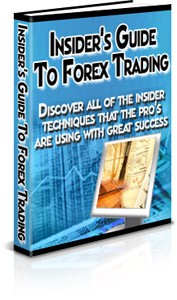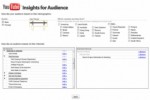 License Type: Private Label Rights
License Type: Private Label Rights  File Size: 2,613 KB
File Size: 2,613 KB File Type: ZIP
File Type: ZIP
 SKU: 11420
SKU: 11420  Shipping: Online Download
Shipping: Online Download
Ebook Sample Content Preview:
Chapter 7: Aspects Of The Trade
You are now versed in the functionality of the stock market and have decided that you are willing to accept the risk factors involved. However, you want to know everything you can about balancing that risk with intelligent investment options. How can you be sure that the risks you take are more likely to be rewarding in the long run than destructive?
Long and Short
One of the most important parts of making money on the stock market is to determine your position. The long position is basically the purchasing position - you are about to take on a long-term commitment for ownership of some stock, security, or other traded commodity. The short position, by contrast, is the selling position - you are shortly going to dispose of the same sort of ownership and any responsibility toward it.
The best time to take up the long position is when stock prices are low. This will get you into the market at a reasonable price and increase your chances for profitability as new offerings go up in price and older investment options recover or rebound. In fact, as others take the long position and purchase at the same time you do, this will actually drive the value of securities up through the standard rule of supply and demand, causing the beginning of what could be a bull market.
You may equate this with the end of the month at a car dealership. The prices tend to drop on any cars left on the lot for sale, and the dealer is more often willing to bargain because he or she wants less inventory on the lot. Likewise, when stock prices are low, some will panic and dump all of their holdings at these low prices, thinking that their shares will never recover the value. This can only be of assistance to you.
When prices are high, it is likely time to turn around and sell your shares to bring in a profit, not losing anything on unrealized gain (profit that cannot be counted in liquid assets or cash because it is still invested in a volatile stock option). You should never sell for a price that is below your cost, as this brings negative equity and loss of funds. You should always sell for the greatest amount of profit that you feel is safe.
In other words, if you buy a security at fifteen dollars per share, and it quickly rises to twenty-five dollars per share, you may very well feel that it could hit thirty dollars per share within a week. However, you must determine if you are willing to risk losing your already secured earnings often dollars per share to wait that long, should the price actually fall, so you may decide to sell at the current high price.
Market-Makers And Selling Short
What if the stock values are up incredibly high, but you did not get in on that particular commodity and own no shares? Your first step should be to visit a market-maker or to make a deal with a broker for a short sell. A market-maker is literally a stockbroker who purchases keeps a certain amount of shares of several securities or stocks on hand, which are purchased during a time when the market rates are low.
The firm will then turn around and sell those shares to an individual at that low price, regardless of the market rate, in effect making its own market (thus the name). The individual who purchases from the firm can immediately sell the commodities on the open market at market rate (which is higher), making an incredible amount of profit in a short period of time.
A short sell is another option for a quick profit. In this scenario, you will borrow a particular number of shares from a stockbroker to sell when the market value is high. Your job is to then wait for the stock price to go down, purchase the same quantity of stock, and return the holdings to the broker, keeping the profit from the sale, minus the broker fees.
The way that a car dealer works with trade-ins is very similar. They will purchase the car from you at a very low price, then turn around and sell it on the lot for a high profit margin.
One of the most positive aspects of a short sell is that you never actually take possession of the stock, meaning that you are never in a position to lose money. Because you have sold shares for a high price, you have already profited, and in the worst-case scenario, the particular stocks will not drop in price. Rather than return the stocks to the broker from whom they were borrowed, you can simply pay back the amount for which they were originally purchased, along with the premium.
How can you be sure that you will not overshoot the best price options or miss a good rate because you are unavailable to place a buy order or sell order with your broker? Is there a way to set limits on your trades? Next, we will discuss ways to protect your investments and limit your risk factors.
- File Size:2,613 KB
- License: Private Label Rights
- Category:Ebooks
- Tags:2007 Ebook Private Label Rights








